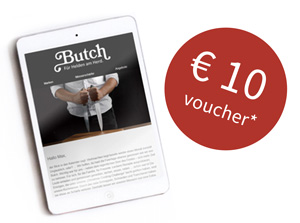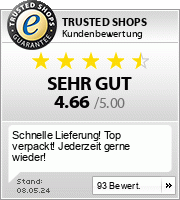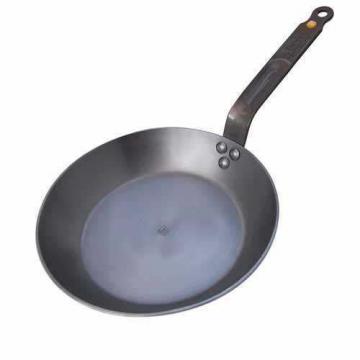
From Stainless Steel to Cast Iron: Find the Ideal Pan for Your Kitchen
Whether you want to sear a juicy steak, create delicate crêpes, or gently cook vegetables – choosing the right pan is crucial. In our range, you'll find a diverse selection of pans made from various materials, tailored to your individual cooking needs.
For searing meat, uncoated pans made of stainless steel or cast iron are particularly suitable. They retain heat optimally and ensure a crispy crust. If you prefer low-fat cooking, coated pans are ideal as they prevent food from sticking and allow for easy cleaning.
Special pans like woks for Asian dishes or crêpe pans for ultra-thin pancakes also enhance your kitchen equipment. When choosing, make sure the pan matches your stove type and is the right size for your needs.
With the right pan, cooking becomes a pleasure, and your dishes will succeed in no time.
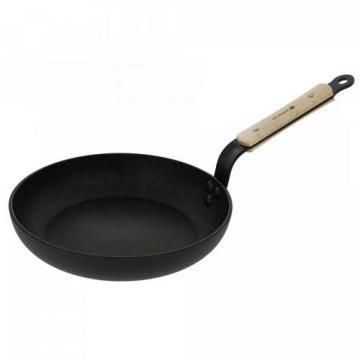 Aluminum pansAluminum pans are true all-rounders in the kitchen. Thanks to their light weight and excellent heat conductivity, they allow for quick and even heating of your dishes. They particularly shine with...
Aluminum pansAluminum pans are true all-rounders in the kitchen. Thanks to their light weight and excellent heat conductivity, they allow for quick and even heating of your dishes. They particularly shine with...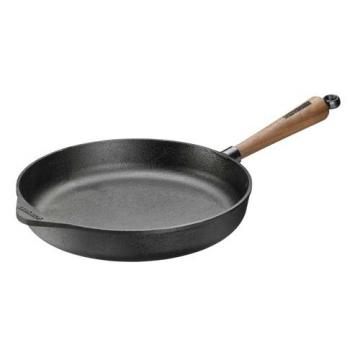 Cast iron pansCast iron pans are true multitaskers: They retain heat excellently and distribute it evenly, ensuring perfect frying results. Whether it's juicy steaks, crispy fried potatoes, or aromatic vegetable...
Cast iron pansCast iron pans are true multitaskers: They retain heat excellently and distribute it evenly, ensuring perfect frying results. Whether it's juicy steaks, crispy fried potatoes, or aromatic vegetable...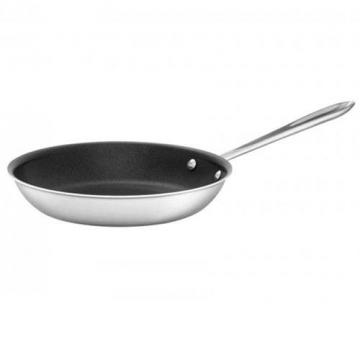 Coated pansLet's be honest, we can't completely do without a pan with a non-stick coating. The advantages are obvious: Non-stick coated pans are suitable for any dish, they are easy to use, and there's...
Coated pansLet's be honest, we can't completely do without a pan with a non-stick coating. The advantages are obvious: Non-stick coated pans are suitable for any dish, they are easy to use, and there's...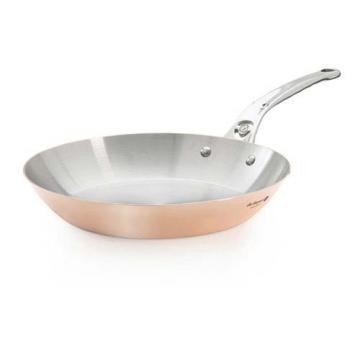 Copper pansCopper is one of the oldest metals discovered by humanity (approximately 5000 years before the Christian era). It was used and valued by the oldest known cultures at the time because the metal was...
Copper pansCopper is one of the oldest metals discovered by humanity (approximately 5000 years before the Christian era). It was used and valued by the oldest known cultures at the time because the metal was...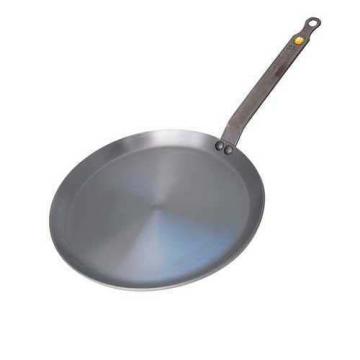 Crêpes & pancake pansFreshly prepared, lightly browned, and paper-thin... These are the typical characteristics of a crêpe... Nowadays, there are countless ways to refine the basic recipe. Would you prefer the sweet...
Crêpes & pancake pansFreshly prepared, lightly browned, and paper-thin... These are the typical characteristics of a crêpe... Nowadays, there are countless ways to refine the basic recipe. Would you prefer the sweet...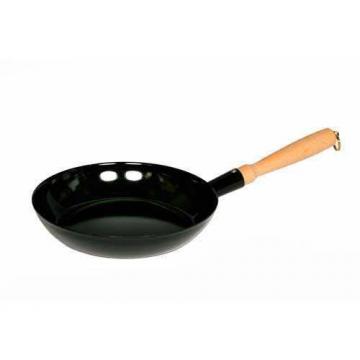 Enamel pansBack in the day, cookware made of enamel was a true must-have in every household. Whether it was a pot, a cup, a pan, or a salad bowl... You wonder why? The secret is the coating. Anyone who thinks...
Enamel pansBack in the day, cookware made of enamel was a true must-have in every household. Whether it was a pot, a cup, a pan, or a salad bowl... You wonder why? The secret is the coating. Anyone who thinks...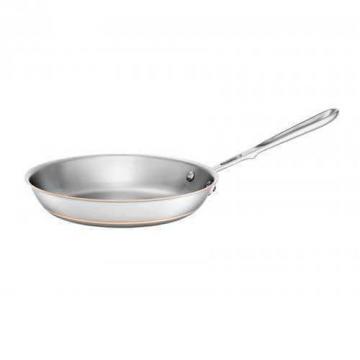 Frying pansIn the world of frying pans, there is a suitable model for every cooking style. Whether you're a fan of stainless steel, cast iron, or non-stick pans, here you'll find the right pan for your culinary...
Frying pansIn the world of frying pans, there is a suitable model for every cooking style. Whether you're a fan of stainless steel, cast iron, or non-stick pans, here you'll find the right pan for your culinary...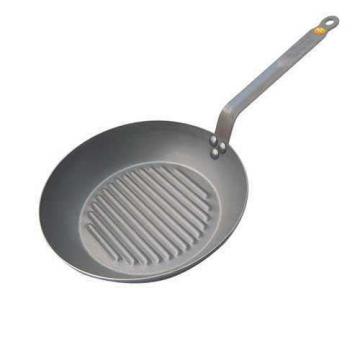 Grill pansHow everyone looks forward to summer. Not just because of the beautiful weather, the warmth, and the long evenings... What would this wonderful season be without grilling? Grilling outdoors is only...
Grill pansHow everyone looks forward to summer. Not just because of the beautiful weather, the warmth, and the long evenings... What would this wonderful season be without grilling? Grilling outdoors is only...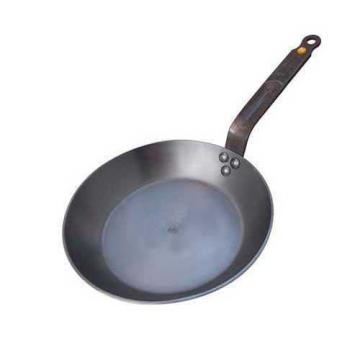 Iron pansCooking with cast iron pans has a long tradition. A very long one indeed. Historians are not entirely sure when exactly people began preparing food in iron pans. What is known: The oldest finds of...
Iron pansCooking with cast iron pans has a long tradition. A very long one indeed. Historians are not entirely sure when exactly people began preparing food in iron pans. What is known: The oldest finds of...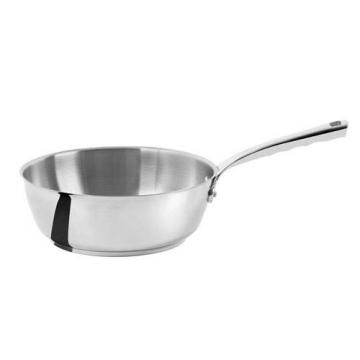 SauteusesDo sauté pans count as pots or pans? You will receive different answers to this question. At Butch, we classify sauté pans more as pans. For us, they are nothing more than pans with high sides, with...
SauteusesDo sauté pans count as pots or pans? You will receive different answers to this question. At Butch, we classify sauté pans more as pans. For us, they are nothing more than pans with high sides, with... Stainless steel pansStainless steel pans are frugal, easy to use, and almost universally applicable
Stainless steel pansStainless steel pans are frugal, easy to use, and almost universally applicable
Your Question: What type of pan and which material for what purpose?
Butch's Answer: Pans are a cook’s best friend. And they’re as individual as the heroes and heroines who stand at the stove with them. That’s why we’d like to give you a few helpful tips today on how to find the right pan for you. One thing first: there is no such thing as the perfect all-in-one pan—sorry! You don’t need ten pans, but depending on the use, a small basic selection of different models is advisable. English scientists found in a study... Just kidding—Butch keeps it real and provides you with useful facts and personal experiences. We generally recommend that you should own at least two pans: one WITH a non-stick coating and one WITHOUT. The first is for delicate dishes like omelets or fish, and the second lets you sear steaks and fry potatoes to a crisp. So when buying a pan, pay attention to the material used and what purpose the pan should serve.
Pan Materials
The material tells you a lot about how well the pan conducts heat.
Enamel Pans
Everyone knows them, and many of us have nostalgic memories of them: enamel pans are made of steel and – simply put – coated with a layer of glass. Progress has also made its mark here. Thanks to new material compositions and improved manufacturing processes, today’s enamel pans from reputable manufacturers are no longer comparable to the pans of the past. Modern enamel is much more robust and scratch-resistant. The steel core conducts heat very well, and the enamel also offers light non-stick properties. At Butch, we offer enamel pans from the Austrian manufacturer Riess. You can find them on our Riess brand page.
Aluminum & Cast Aluminum Pans
Practical, quick, and nowadays usually with a non-stick coating, as the combination of "aluminum and food" is not ideal. Aluminum pans heat up quickly, distribute heat evenly, and have excellent thermal conductivity. They are also much lighter than their cast iron counterparts. You can find aluminum pans with non-stick coating here in our online shop.
Iron Pans
The retro classic: always a guarantee for good results. Iron pans are made of forged iron and have just as high conductivity as cast iron pans. However, they are much more responsive, heating up quickly and transferring temperature changes immediately to the inside. Iron pans must be “seasoned” before first use. The resulting dark patina seals the pan, protects the metal from rust, and acts as a natural non-stick coating. Because of this, iron pans may not appeal to aesthetic purists. They are true workhorses—and they can look the part. Only when your pan has a genuine “used look” is it truly great. Since we love iron pans, you’ll of course find them with us. Check out our de Buyer Mineral B iron pans, which we also offer pre-seasoned.
Cast Iron Pans
The cozy heavyweight. Not forged, but cast. Hence the name "cast iron." Ta-da! Cast iron has excellent heat retention. Due to its thickness, it takes a bit longer to heat up, but then it retains heat for a long time. Perfect for searing and, unlike iron pans, also ideal for braising. Cast iron pans are virtually indestructible and, with proper care, will outlive the cook.
Stainless Steel Pans
The sleek all-rounder available in countless variations: with or without non-stick coating, with capsule bottom or multilayer construction. We'll cover non-stick coatings later, so let’s first look at the duel between "capsule bottom vs. multilayer material." Stainless steel is a poor heat conductor on its own, so it needs a partner like aluminum or similar materials, which are integrated into the so-called capsule bottom. This bottom is attached to the pan and, depending on manufacturer and quality, is 3–10 mm thick and mainly heats the base.
In pans made of multilayer material, the conductive aluminum is incorporated throughout the walls, so heat is also transferred from the sides. This gives you fast heating times, and the pans respond quickly to temperature changes. That means full control and professional precision cooking.
Copper Pans
The elegant professional and king of pans. Copper pans are known for their excellent heat conductivity and distribution. Even the slightest temperature changes are transmitted precisely, making copper pans ideal for cooking delicate foods. Thanks to this precise heat control, copper pans are a staple in top-tier kitchens worldwide. Worth mentioning: this precision also saves energy and time. Luckily, there are now copper pans suitable for induction cooktops too.
Types of Pans
You can fry in any pan—that’s what they’re made for. But some models are specialized thanks to their shape.
Frying Pans
The umbrella term for pretty much all pans—regardless of shape, material, or non-stick coating. Because frying is a pan’s main purpose. At Butch, we refer to pans without non-stick coating as "frying pans"—the ones that allow for a crispy sear. We'd also like to point out a significant detail regarding sidewall inclination: pans with a Lyonnaise shape have slanted sides. This makes it easier to remove food and lets it slide out gracefully. With a bit of skill, you can flip the contents just with the pan’s typical tossing motion. Pans with straight sides offer a larger frying surface, though flipping and removing the food is a bit less convenient.
Non-Stick Pans
This type of pan often sparks debate: ideally, you'd like to avoid them—but somehow, you can't live without one. At Butch, we believe a non-stick pan is an essential part of every kitchen. The perfect partner for delicate egg dishes or fish. These pans come in different varieties depending on the base material used. There are also many types of non-stick coatings. We go into detail about these in our “Non-Stick Pans” category.
Serving Pans
Pans get the name “serving pan” when they have two loop handles instead of a long handle. You’ll often see them also called paella pans. These pans fit better in the oven and on the table. The only downside: tossing food without a spatula is a bit trickier.
Braising Pans & Sauté Pans
We’re talking about pans with high sides here. After searing, the dish can be further cooked with added liquid. The French term for braising pans is *Sauteuse* or *Sautoir*.
Grill Pans
For indoor grilling fun. A perfect companion when it comes to searing meat or seafood to a nice crisp. The grill lines are typical—they don’t just look good but also add extra roasted flavor. Excess fat collects in the grooves. Grill pans are usually made of cast iron, which ensures even heat distribution and durability.
Crêpe & Pancake Pans
Flat sides are the hallmark of crêpe and pancake pans. This allows you to easily slide a spatula under the batter to flip it. These pans are available with or without non-stick coating.
Woks & Wok Pans
"A wok is a high, continuously curved pan native to Asian cuisine." Thanks, Wikipedia—we couldn't have said it better ourselves. By now, a classic in our kitchens too: the wok pan with very slanted sides. Traditionally, woks are completely round or have only a small flat base. Adapted to European needs, most woks now have a larger flat bottom for better stability. Because of this, they closely resemble conical sauté pans. Woks allow for quick and gentle cooking of finely chopped ingredients with constant stirring—perfect for international dishes.
Frequently Asked Questions About Pans
What types of pans are there and what are they used for?
There are various types of pans such as frying pans, braising pans, woks, and grill pans. Frying pans are all-rounders for meat and vegetables, braising pans are great for dishes with lots of liquid, woks are ideal for Asian cuisine, and grill pans give food a typical grilled pattern.
Which material is best for pans?
The best material depends on your cooking habits. Stainless steel pans are durable and versatile, cast iron pans retain heat well, and non-stick pans prevent food from sticking and are easy to clean.
How do I properly care for my pan?
Clean your pan with warm water and a soft sponge after use. Avoid harsh cleaners and do not put it in the dishwasher to protect the coating. Dry it thoroughly to prevent rust.
Why should I use a cast iron pan?
Cast iron pans offer excellent heat retention and distribution, leading to evenly cooked food. They are durable and develop a natural non-stick surface over time, making cooking easier.
How do I prevent food from burning in the pan?
Preheat the pan properly before frying and use a bit of fat or oil. Don’t set the temperature too high and turn the food in time. With non-stick pans, you can use less fat without food sticking.
Can I use any pan on any stovetop?
Not all pans are suitable for every stovetop. When buying, check whether the pan is compatible with induction, gas, or electric stoves. Many modern pans are designed for all types.
How can I recognize a high-quality pan?
A high-quality pan has a solid weight, distributes heat evenly, and has a durable coating. Look for materials like stainless steel or cast iron and check the workmanship of the handles and base.














